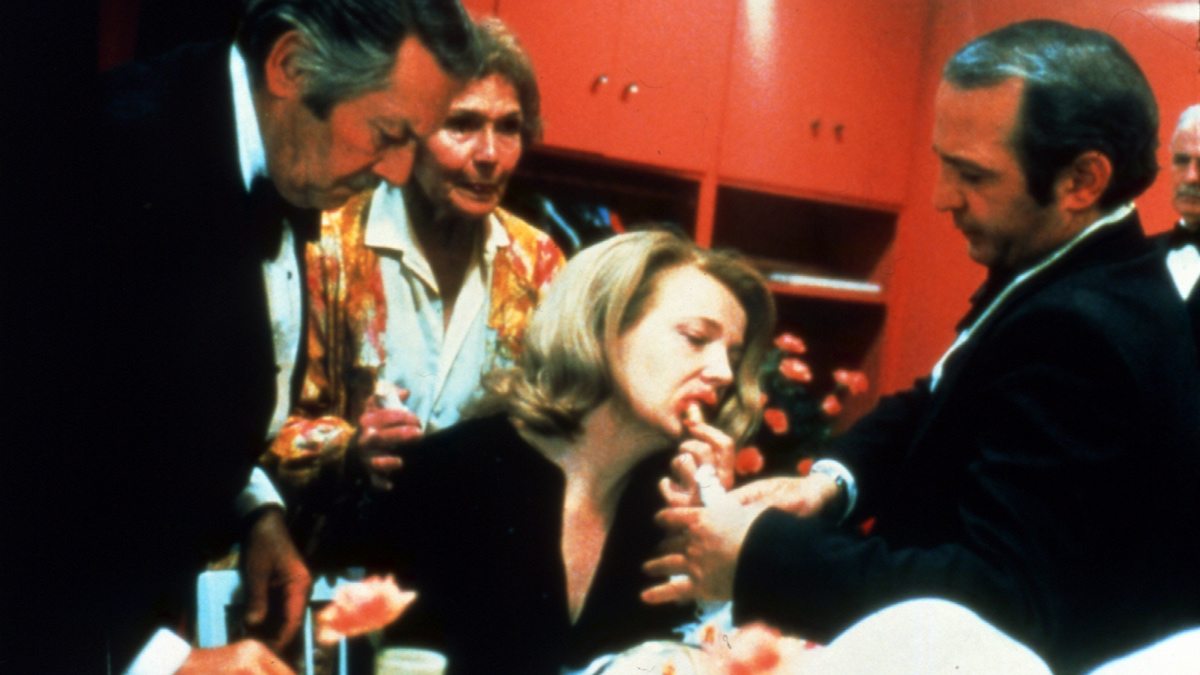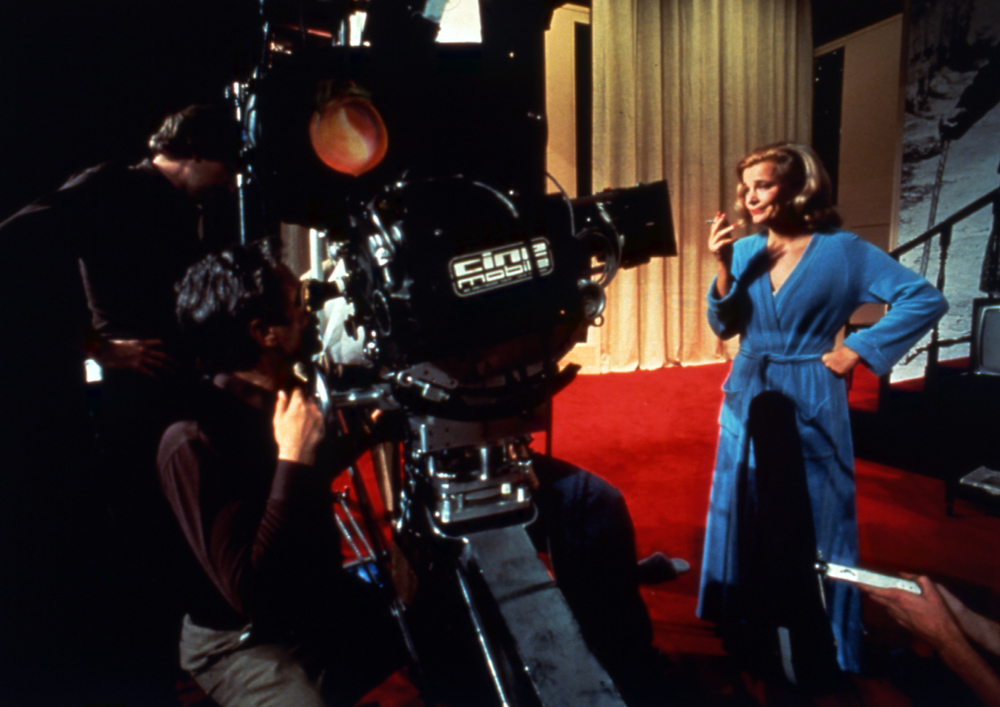
(c)1977 Faces Distribution Corporation
“Opening Night” Freedom from the existential fear of “aging”
2023.06.26
hidden face
One day, stage actress Myrtle (Gena Rowlands), who is working on her new play ``The Second Woman,'' comes across the accidental death of a young woman, Nancy (Laura Johnson), who is an enthusiastic fan. Heartbroken, Myrtle attends the funeral, but her family's response is indifferent. Eventually, she begins to see visions of Nancy and loses her emotional balance. He begins to repeat acts that deviate from the script, such as changing lines without permission, throwing props, and talking to the audience.
As usual, Cassavetes used close-ups of the faces of Gena Rowlands as Myrtle, Ben Gazzara as the director Manny, Joan Blondell as the playwright Sarah, and himself as the actor Maurice. Project. In her eyes, on her lips, you can clearly see the conflict swirling deep within her heart.
What's interesting is that, in contrast, Nancy's face is completely hidden in the early accident scene. The hat pulled deep over her eyes, the pounding rain, and the car window continue to hide her features. It is clear from her words and actions that she is infatuated with Myrtle, but we, the audience, are unable to access her inner feelings. In Cassavetes' theatrical technique, she is treated as a "foreign object."

"Opening Night" (c)1977 Faces Distribution Corporation
The first time Nancy reveals her beautiful appearance is in Myrtle's dressing room. She is devastated because she is not able to perform as she had hoped. Then, suddenly, a strange cut is inserted...the outline of Myrtle, looking depressed, is blurred and doubly shifted. When the cut changes, for some reason it's in focus, intertwining fingers with the phantom Nancy and exchanging smiles.
Is ``Opening Night'' the story of Myrtle being driven into madness by having visions of Nancy who has passed away? Is it a neurotic horror in the same vein as Roman Polanski's `` Repulsion '' (65) or Darren Aronofsky's ` `Black Swan '' (10)? Of course, there is that aspect. However, the Nancy who appears as a phantom is probably not the same girl who died in an accident. She is Myrtle herself, a teenager who was born at the moment her outline doubled.
"Boys. Men. Older men. Younger ones. They always asked me out."
The lines spoken by Nancy, who is also blonde and dressed in the same black blouse, are probably stories about Myrtle's past. By summoning the image of a dead woman and superimposing it on her 17-year-old self, the themes of youth and old age become apparent.

